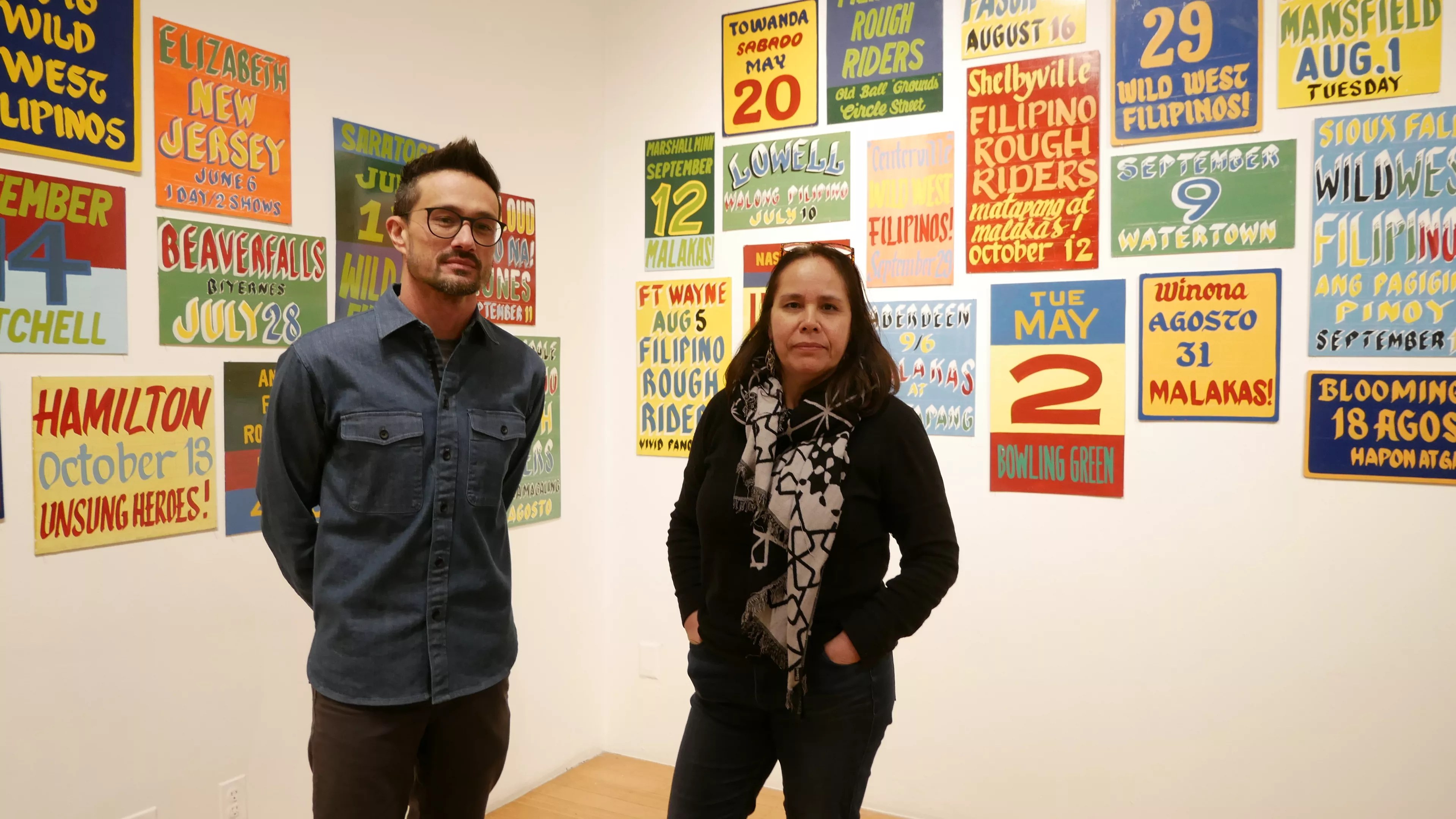
Gil Asakawa

Audio By Carbonatix
Sometimes, history is hidden in the forgotten flashes of fleeting images caught by a camera. That’s how two Colorado sleuths found the proof that Filipino cowboys were part of the hugely popular Buffalo Bill’s Wild West, William F. Cody’s extravaganza that traveled the world over a century ago.
Yumi Janairo Roth and Emmanuel David are both educators at the University of Colorado Boulder. She’s the head of the Fine Arts Department and a professor of sculpture; he’s an associate professor of Women and Gender Studies. They’re also both biracial Filipinos. That shared background led them on a global journey of discovery that inspired Last Year’s Wonders All Surpassed, an exhibit now on display at the David B. Smith Gallery.
Filipinos were among the earliest Asians to arrive in North America, starting in the 16th century as sailors and laborers brought by the Spanish; they settled in places like California and Louisiana. Today, Filipinos comprise the second-largest Asian population in Colorado, after the Chinese, with more than 35,000 Filipinos in the latest census.
Still, the link to Buffalo Bill was a surprise. “We first came across this topic while looking into the history of Filipinos in the Rocky Mountain West,” recalls David. “We came across a photo at the Denver Public Library in their archives.” Nate Salsbury, Cody’s business manager, kept detailed scrapbooks and albums that are now part of the DPL archives, and records indicated that Filipinos were part of Buffalo Bill’s Wild West show in the late 1800s, right after the Spanish-American War.
This year, make your gift count –
Invest in local news that matters.
Our work is funded by readers like you who make voluntary gifts because they value our work and want to see it continue. Make a contribution today to help us reach our $50,000 goal!
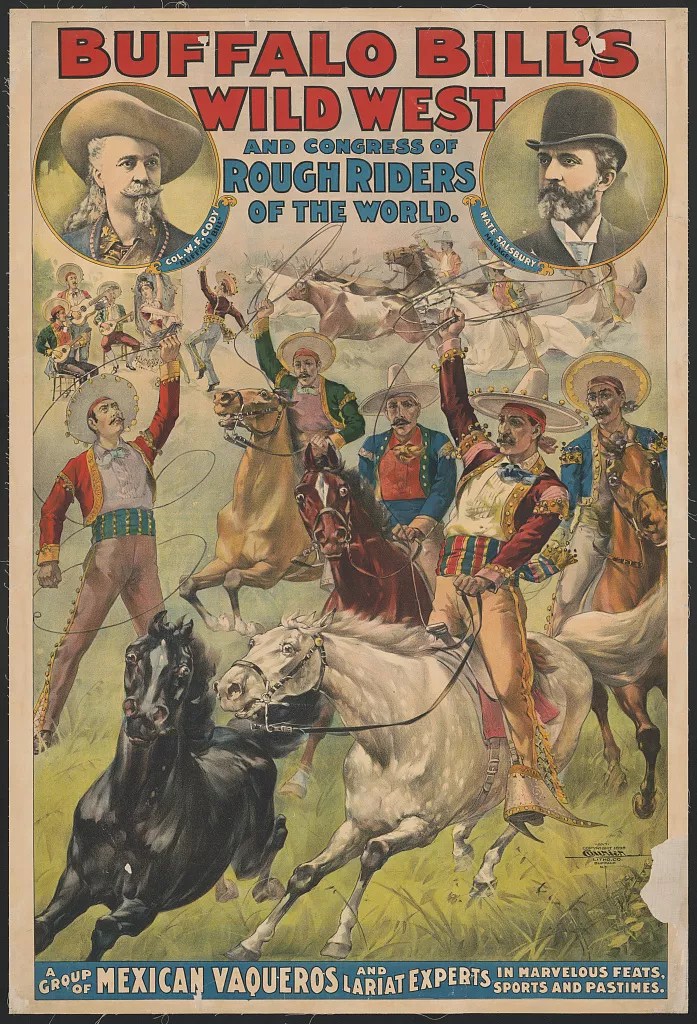
One of the colorful posters advertising Buffalo Bill’s Wild West.
Buffalo Bill Museum
“Then we made a trip to the Buffalo Bill Museum and began searching their archives, too,” adds David, referencing the city-owned facility on Lookout Mountain. “So the story began with two institutions in Colorado: the Denver Public Library and the Buffalo Bill Museum and Grave.”
At the museum, the two educators spotted unidentified Filipinos in archival photographs, and then found the names of three regulars who toured with the show: a woman, Ysidora Alcantara, and two men, Felix Alcantara and Geronimo Ynosincio. Subsequent research showed that they’d been recruited in the Philippines by the show’s manager to cross the Pacific and dress in traditional clothing and “perform their aboriginal dances and sing their native songs.”
The three arrived in San Francisco in March 1899 and rode the train across the country to Madison Square Garden in New York City in time for opening night of the Wild West season, where they were billed as “Filipino Roughriders.”
There was cattle ranching in the Philippines as far back as the 16th century when Spain conquered the country, bringing the skills of Spanish vaqueros. Cowboy culture morphed during American occupation following the Spanish-American War of 1898, during which the U.S. was given Puerto Rico, Guam and the Philippines as colonies. (The Philippines were granted independence in 1946, after the end of WWII.) The American media called the soldiers led in the war by Teddy Roosevelt “Roughriders,” using a term Cody had coined in 1893 for his performers, the “Congress of Rough Riders of the World.”
But unlike most of those performers, the Filipinos in Buffalo Bill’s show were considered the enemy, and booed.
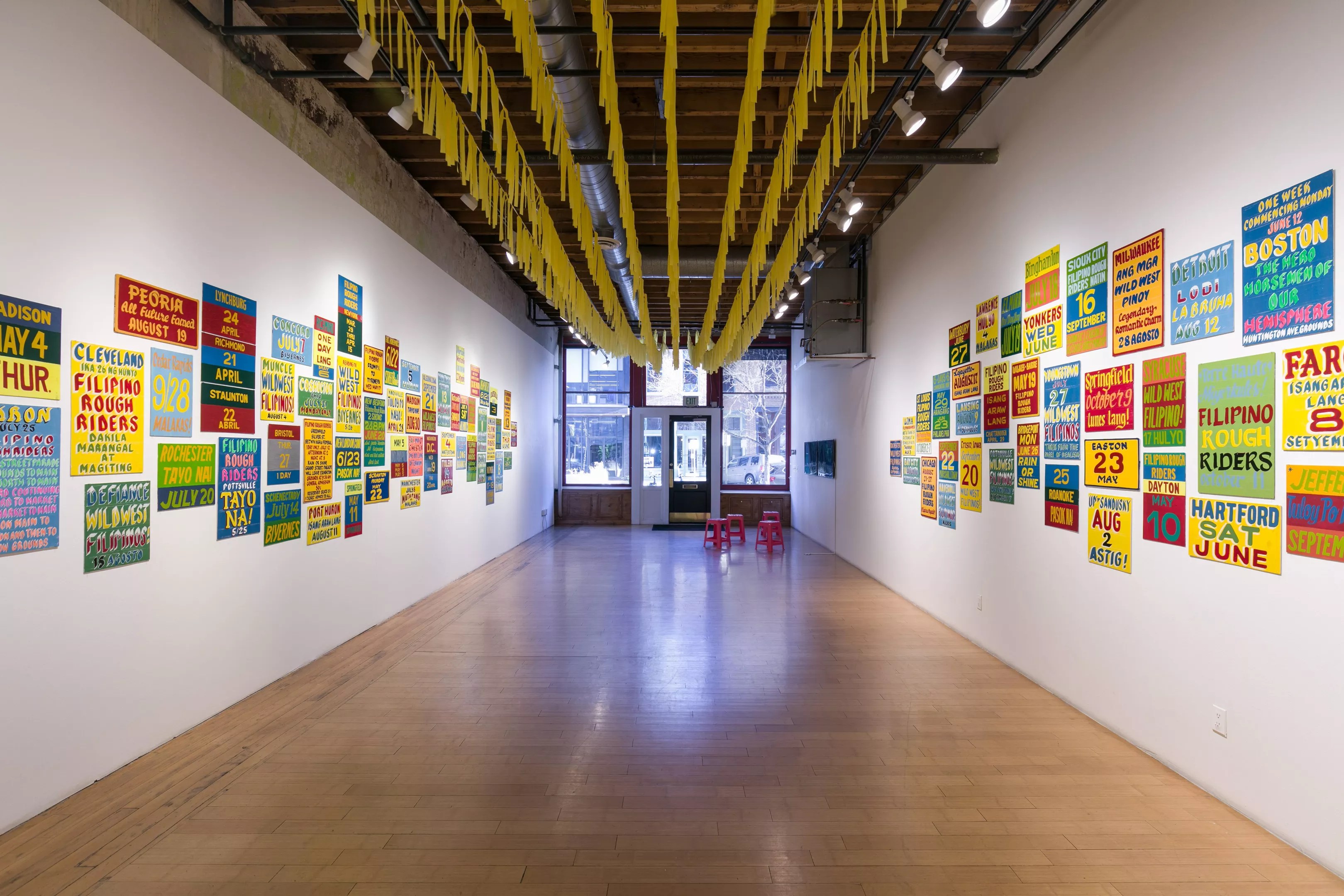
Last Year’s Wonders All Surpassed at the David B. Smith Gallery
David B. Smith Gallery
Although they were able to identify the Filipino Roughriders, David and Roth wanted to know more. “Since we were both living and working in Colorado, we had been interested in Filipino experiences away from the West and East coasts. That led us to thinking about Filipinos and the American West, not a subject that often comes to mind,” Roth explains. “As we were learning about this group of Filipinos and Buffalo Bill’s Wild West, we realized that there were lots of gaps in knowledge.
“At the beginning, we had tiny, scattered fragments of information in contrast to the magnum opus of Buffalo Bill scholarship. In the absence of a complete, knowable and ‘official’ archive, we turned to the speculative opportunities offered through art,” Roth continues. “This allowed us to explore a series of ‘what if’ questions…’What if the Filipino troupe took center stage?’ While we created this work and explored its impact in public spaces, we continued to do archival research. …We were always interested in the ‘gaps,’ because those absences in the historical record are not just absences: They offered space for us to speculate on what could have been and what could be.”
They decided to dig in – not just as academics, but as artists. As educators, they co-authored a 2024 article in the Journal of Asian American Studies published by Johns Hopkins University Press, titled “Playing Filipino: Racial Display, Resistance, and the Filipino Rough Riders in Buffalo Bill’s Wild West.” As artists, they began getting creative.
“We’re interested in more writing because we have more of the story to tell, but writing takes a long time, especially the review process. Art offers experimentation and immediacy,” Roth says. “It also offered the opportunity to reframe history and make the Filipinos the big stars of the Wild West.”
Roth has a long resume as a sculptor, and David was a photographer before going into social studies. That led to the pair’s involvement in the Museum of Contemporary Art’s 2023 exhibit Cowboy; they created a piece in which the names of the three Filipino stars are featured on theater marquees with the title, “We Are Coming.” That’s a play on Buffalo Bill’s advance slogan for his show, “I Am Coming.”That work is now touring the country, often displayed on actual theater marquees; it was exhibited in Los Angeles in November 2023 during Filipino American History Month, sponsored by the Gene Autry Museum of the American West.
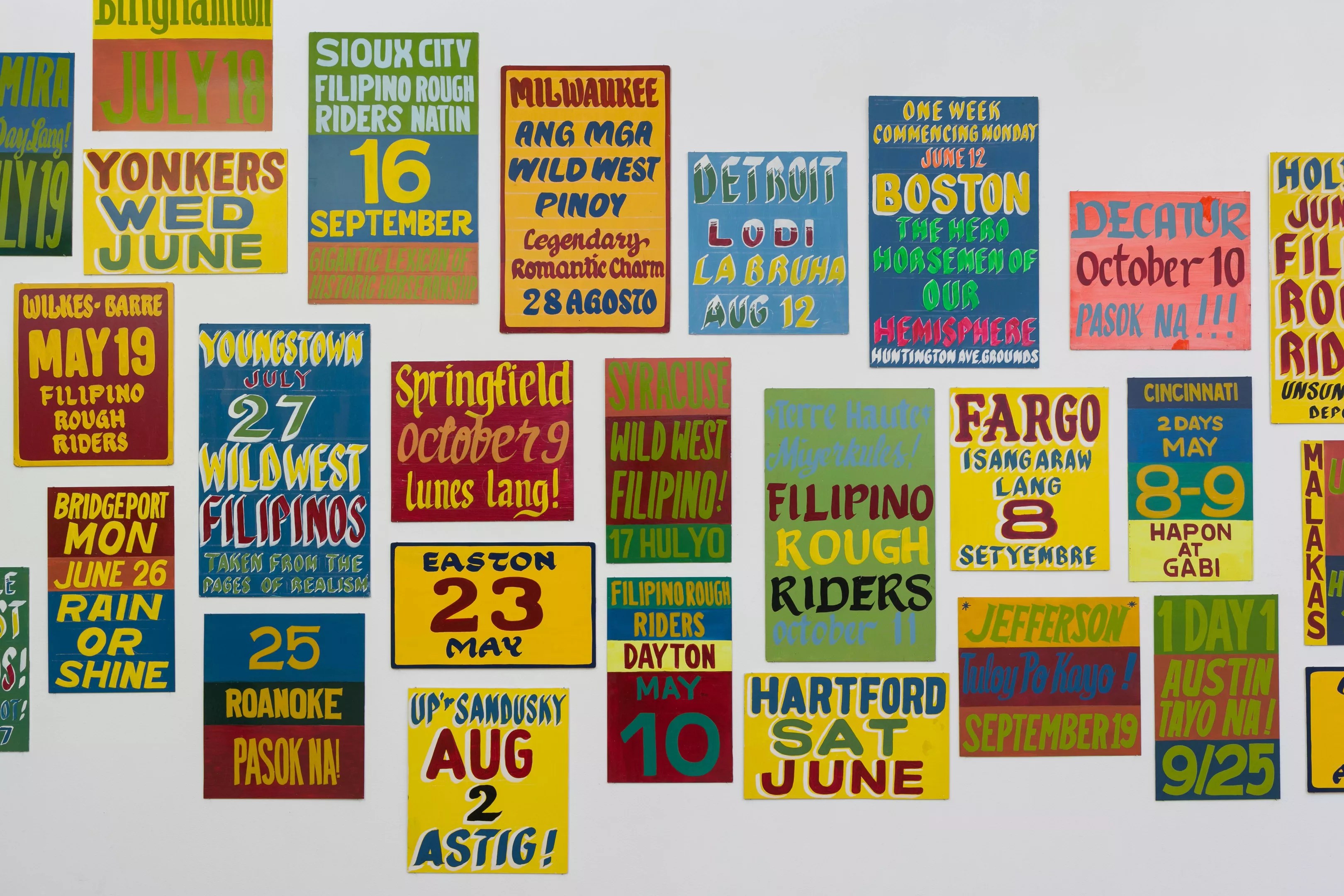
The exhibit includes signs documenting Buffalo Bill’s Wild West stops around the globe.
David B. Smith Gallery
Meanwhile, Roth and David traveled to the Philippines to study that country’s cowboy culture today, experience first-hand the competitiveness of a Filipino rodeo, and find a visual expression for the Roughriders. They found that expression through Jeepney sign painters, people who make their living creating colorful metal enameled signs for Jeepneys, the country’s most popular public transportation form that’s a cross between a taxi and a bus.
“There are four different sign painters that we worked with, like traditional sign painters in the Philippines, because the visual vernacular in the Philippines is still a lot of these signs for everything,” Roth explains. “They haven’t changed, not too much. I mean, more and more of the digital stuff is starting to displace it. Even though it’s in some ways an antiquated thing, it’s also a very contemporary thing, right? So we worked with them to produce all the signs. And through the process of working with them, they also started to learn about this story.” The road of historical education goes both ways.
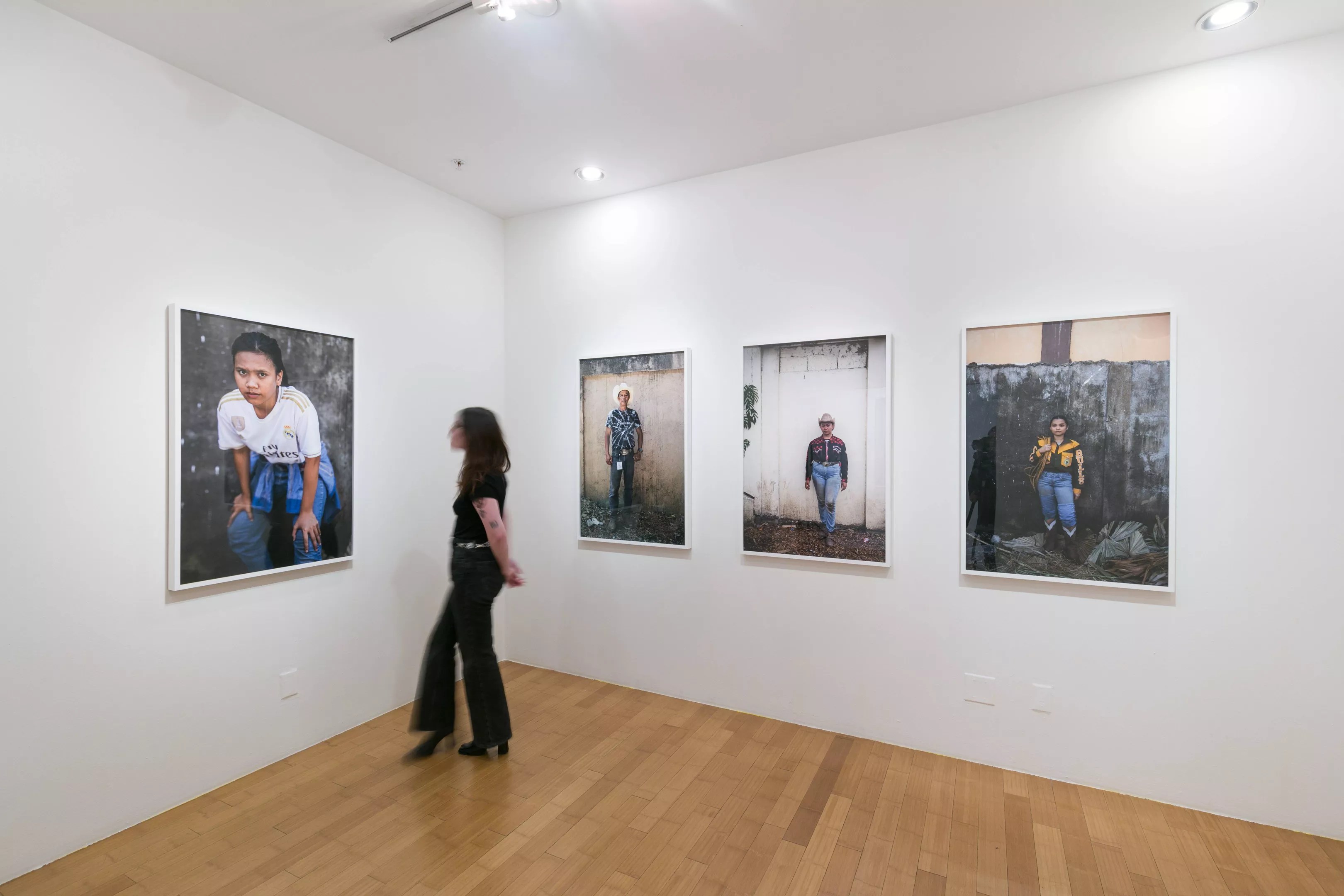
The exhibit includes photographs of Filipino rodeo stars.
David B. Smith Gallery
The signs they made became the basis of Last Year’s Wonders All Surpassed, a title that echoes another Wild West slogan. The pieces showcase places where Buffalo Bill brought the show, with slogans like “One Day” and the name of the city, in a mix of English and Tagalog, a native Filipino language: “Filipino Rough Riders Pottsville Tayo Na! 5/25.” The title of the sign portion is 11,111, “the number of miles that the Wild West show traveled in one year,” Roth notes.
The exhibit includes a separate room of powerful portraits of Filipino and Filipina rodeo stars from Rodeo Masbateño, an annual festival founded in the 1990s on the central Philippines island of Masbate. The images capture men and women focused on the competition, sweat- and dirt-stained but offering intense, Diane Arbus-like stares for the cameras.
The effect of the exhibit is both educational and inspirational, serving as a bridge to the past and present of U.S.-Philippines relations and cross-cultural connections. “There’s a lot of resonances that we think about,” Roth says. “The exhibit is not just a historical project, but one that sort of talks about contemporary immigration and what that looks like today.”
Last Year’s Wonders All Surpassed, at David B. Smith Gallery, 1543 A Wazee Street. There will be an artists’ talk with Yumi Janario Roth and Emmanuel David from 3 to 5 p.m. on Saturday, February 22, the closing day of the show. Find more information at davidbsmithgallery.com.